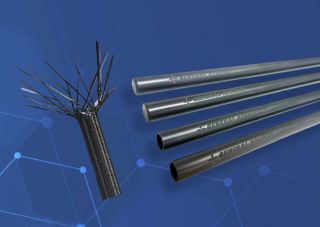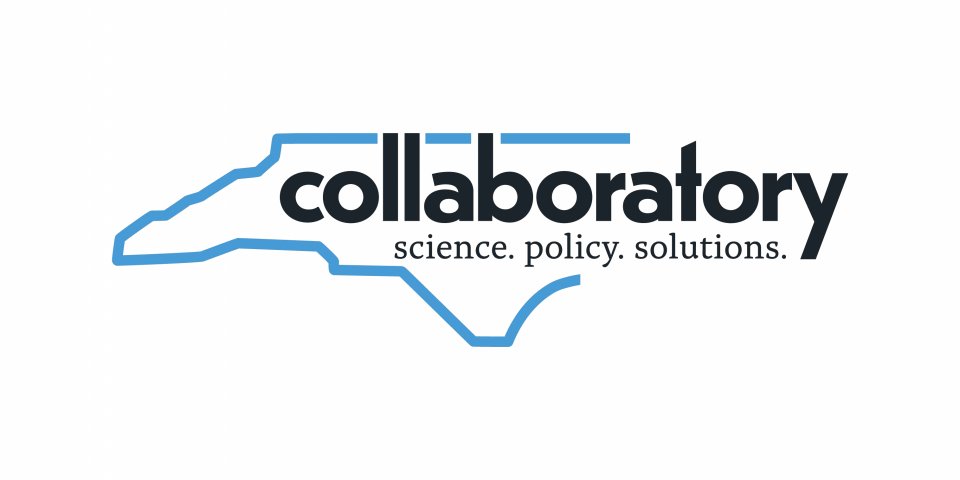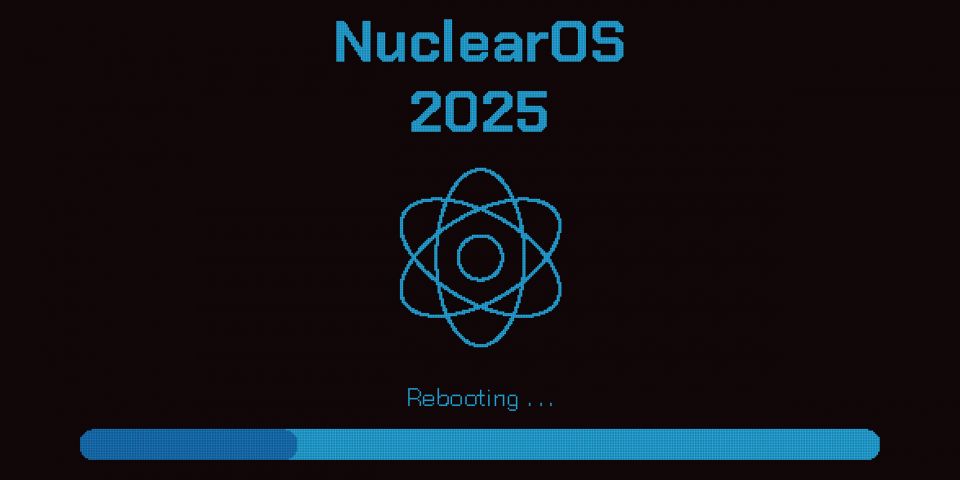RP3C Community of Practice’s fifth anniversary
In February, the Community of Practice (CoP) webinar series, hosted by the American Nuclear Society Standards Board’s Risk-informed, Performance-based Principles and Policies Committee (RP3C), celebrated its fifth anniversary. Like so many online events, these CoPs brought people together at a time when interacting with others became challenging in early 2020. Since the kickoff CoP, which highlighted the impact that systems engineering has on the design of NuScale’s small modular reactor, the last Friday of most months has featured a new speaker leading a discussion on the use of risk-informed, performance-based (RIPB) thinking in the nuclear industry. Providing a venue to convene for people within ANS and those who found their way online by another route, CoPs are an opportunity for the community to receive answers to their burning questions about the subject at hand. With 50–100 active online participants most months, the conversation is always lively, and knowledge flows freely.
Since February 2020, the 48 CoP recordings uploaded to the ANS Standards channel on YouTube (@americannuclearsocietystan2740) have received over 21,000 views, making them among the most highly viewed content on this subject. Among those are several standout CoPs with over 2,000 views each, all focused on high-profile advanced reactor projects: Kyle Metzroth’s presentation on X-energy’s implementation of NEI 18-04 for the Xe-100; Brian Johnson on TerraPower’s SSC safety classification using NEI 18-04 for Natrium; Dennis Henneke on GE Hitachi’s safety assessment of the BWRX-300; and Brandon Chisholm of Southern Company on the safety case development for TerraPower’s MCRE.
In addition to these CoPs focused on applications of RIPB principles, presentations span the development of methodologies, design of standards, educational concepts, perspectives of varying organizations in the field, and general information. All these CoPs are hosted on the RP3C page on ANS’s website, at ans.org/standards, along with the presentation slides. Another ANS-supported library of information is the Nuclear Science and Technology Open Research (NSTOR) platform, which has a collection containing the slides for a majority of the CoP sessions with a dedicated DOI for each presentation (nstopenresearch.org/collections/rp3c-cop/). See below for a curated list of the CoP presentations broken down by these major topics for your convenient reference.
The need for meaningful conversations about RIPB thinking in standards is emphasized by the level of participation by reactor technology developers. Beyond the presentations made by X-energy, TerraPower, GE Hitachi, and Southern, CoP sessions have featured designers of microreactor technologies, such as Oklo and Radiant. Many organizations are heavily implementing systems engineering into the design process. This practice benefits from and is a benefit for the goal of RP3C, which is enabling the use of RIPB principles incorporated in ANS standards.
These discussions are not only of benefit to the advanced reactor developers, however. There have been CoPs exploring seismic design, digital instrumentation and control design, radiation protection, aerospace applications (such as NASA guidance), international harmonization, and optimization of operations for the current nuclear fleet (large light water reactors). RIPB principles are applicable in all these areas and more. Best practices are not constrained within any single industry or to specific subgroups within that industry.
Diverse perspectives are shared in the CoPs, with presentations made by reactor developers, electric utilities, standards development organizations, regulators, nongovernmental organizations, universities, national labs, and individual experts. Each segment of the industry embodies a unique mindset that brings understanding and the application of various elements of RIPB principles. Due to the educational nature of the presentations, participation in a CoP webinar is worth one professional development hour for licensed Professional Engineers.
The RP3C appreciates all the support and engagement that ANS has provided in hosting and communicating these CoPs to a broader audience. It is our hope that we will continue to grow the audience and increase the impact over the next five years. If you have interest in participating in a CoP or in being a featured speaker, please reach out to RP3C chair Steve Krahn (steve.krahn@vanderbilt.edu) or vice chair Brandon Chisholm (bmchisho@southernco.com).
Methodologies
These presentations discuss the development of RIPB methodologies that are at a higher level than an individual standard. This content is most relevant to those interested in understanding the benefits, challenges, and lessons learned during efforts to produce approaches and/or guidance that combine and/or synthesize information from multiple different standards.
“Licensing Modernization Project—A Systems Engineering Approach to RIPB Design Safety and Licensing,” by Ed Wallace (GNBC Associates), October 30, 2020.
“Risk-Informed and Performance-Based I&C Design: A Modern and Integrated Approach,” by Matt Gibson (Electric Power Research Institute), June 24, 2022.
“Application of Objectives-Driven Assurance Cases to System Development in an Evolving Acquisition Model,” by Robert Youngblood (Idaho National Laboratory), January 27, 2023.
“Liquid Fuel Reactors: The Benefits of a RIPB Approach,” by Dan Moneghan (Electric Power Research Institute), July 28, 2023.
“Commodification of Advanced and Micro Reactors: An Invested Civil Engineer’s Perspective,” by Andrew Whittaker (University of Buffalo), October 27, 2023.
“The Safety-in-Design (SiD) Methodology—As Applied to Advanced Fission Projects & Beyond,” by Steven Krahn and Megan Harkema (Vanderbilt University), October 25, 2024.
Standards
These presentations discuss the development of standards that include RIPB methods and/or approaches. This content is most relevant to those interested in understanding the benefits, challenges, and lessons learned during efforts to revise an existing standard to incorporate RIPB principles as well as those developing new standards that incorporate these methods.
“Modernization of the ANS Standard for Meteorological Impacts to the Ultimate Heat Sink,” by Marsha Kinley (Duke Energy), March 27, 2020.
“Overview and Status: ASME’s Plant Systems Design Standard,” by Ralph Hill (Hill Engineering Solutions), September 25, 2020.
“ANS-20.2 Writing Group: Our Experience and Feedback,” by John Kutsch (Thorium Energy Alliance), January 29, 2021.
“On a New Standard for RIPB in Reactor Designs (ANS-30.1),” by Mark Linn (ANS-30.1 chair), August 27, 2021.
“Modernizing NASA’s Space Flight Safety & Mission Success Assurance Framework,” by Henry “Chris” Everett (Idaho National Laboratory), May 27, 2022.
“Technology-Inclusive Implications of ANS-30.3, LWR Risk-Informed, Performance-Based Design,” by N. Prasad Kadambi (Kadambi Engineering), February 23, 2024.
“RIPB Design with ASME PSD-1,” by Ralph Hill (Hill Engineering Solutions), September 27, 2024.
Concepts
These presentations discuss concepts that are foundational and/or complementary to RIPB methods. This content is most relevant to those interested in developing and/or applying RIPB approaches (e.g., standards or methodologies).
“Importance of Systems Engineering to Support Risk-Informed, Performance-Based Methods,” by Kent Welter (NuScale), February 28, 2020.
“The Necessity of Systems Engineering for Nuclear Power Deployment,” by Kent Welter (NuScale), February 26, 2021.
“Safety Margins in RIPB Methods,” by N. Prasad Kadambi (Kadambi Engineering), May 28, 2021.
“Licensing Novel Designs on the Basis of Margin,” by Robert Youngblood (Idaho National Laboratory), June 25, 2021.
Applications
These presentations discuss tangible examples of applying RIPB methods in various contexts. This content is most relevant to those who would benefit from understanding the benefits, challenges, and lessons learned from implementing RIPB approaches (e.g., standards, methodologies, or guidance).
“Is the NRC’s Reactor Oversight Process RIPB?” by N. Prasad Kadambi (Kadambi Engineering), April 24, 2020.
“Recent Developments in RIPB Methods for Seismic Design,” by Nilesh Chokshi (NCChokshi Consulting), June 26, 2020.
“NuScale RIPB Design & Licensing Lessons Learned,” by Sarah Bristol (NuScale), July 31, 2020.
“RIPB Methods: Benefits and Challenges,” by Caroline Cochran (Oklo), August 28, 2020.
“RIPB in ALARA,” by Robert Hayes (North Carolina State University), March 26, 2021.
“Update to NuScale’s SSC Classification and D-RAP Processes to Support First Plant Deployment,” by Patrick Conley (NuScale), July 30, 2021.
“ANS-30.3 Performance-Based Decision Making,” by Kent Welter (NuScale), October 29, 2021.
“Experience Implementing the NEI 18-04 Process for the Xe-100 Advanced Reactor Design,” by Kyle Metzroth (X-energy), November 19, 2021.
“Risk-Informed Performance-Based Approach to Managing Plant Operations: From Data to Decisions,” by Diego Mandelli (Idaho National Laboratory), February 25, 2022.
“Natrium SSC Classification Using the Licensing Modernization Project,” by Brian Johnson (TerraPower), April 29, 2022.
“NuScale Systems Engineering—Requirements Management,” by Kevan Griffith (NuScale), February 24, 2023.
“Overview of the Xe-100 Implementation of NEI 18-04,” by Kyle Metzroth (X-energy), March 31, 2023.
“Safety Assessment and Strategy Using a Risk-Informed Approach for the BWRX-300,” by Dennis Henneke (GE Hitachi), September 29, 2023.
“Development of an RIPB Safety Case for TerraPower’s Molten Chloride Reactor Experiment (MCRE),” by Brandon Chisholm (Southern Company/TerraPower), January 26, 2024.
“Oklo’s RIPB Approach to Seismic Design Categorization and Seismic Siting Characterization,” by Mory Diané (Oklo), April 26, 2024.
“A Risk Informed Environmental Process for Microreactors,” by Chanson Yang (Radiant Nuclear), June 28, 2024.
Perspectives
These presentations provide various perspectives on the role of RIPB principles, methods, and approaches in current topics or issues. This content is most relevant to those interested in understanding the status and potential future implementation of RIPB principles, methods, and approaches.
“NRC Staff Experience with Advanced Reactor Vendors,” by Stu Magruder (Nuclear Regulatory Commission), April 30, 2021.
“ANS’s Advanced Reactors Working Group Addresses NEIMA,” by N. Prasad Kadambi (Kadambi Engineering), January 28, 2022.
“A Performance-Based Approach for 10 CFR Part 53,” by Rani Franovich (The Breakthrough Institute) and N. Prasad Kadambi (Kadambi Engineering), July 29, 2022.
“What Society Needs in 10 CFR Part 53,” by Rani Franovich (The Breakthrough Institute), August 26, 2022.
“Policy Challenges of Technology-Inclusive, Risk-Informed, Performance-Based Regulation,” by Patrick White (Nuclear Innovation Alliance), September 30, 2022.
“Risk-Informed, Performance-Based Aspects in Part 53 Draft Rule Package,” by William Reckley (Nuclear Regulatory Commission), October 28, 2022.
“Summary of Part 53 Stakeholder Workshop Series,” by Charlyne Smith (The Breakthrough Institute), April 28, 2023.
“What Will it Take for Deployment and Regulation of Advanced Nuclear Systems Internationally,” by Cyril Draffin (U.S. Nuclear Industry Council), June 30, 2023.
“Benefits of Adoption of RIPB Approaches for Operating Reactors’ Licensing and Standards,” by Svetlana Lawrence (Idaho National Laboratory) and N. Prasad Kadambi (Kadambi Engineering), August 25, 2023.
“Where is the PB in RIPB? A Sharing of Perspectives—More Discussion than Presentation,” by Rani Franovich (The Breakthrough Institute) and N. Prasad Kadambi (Kadambi Engineering), May 31, 2024.
“Risk-Informing Codes and Standards,” by Jon Facemire (Nuclear Energy Institute), August 30, 2024.
Informational
These presentations provide information about various topics related to RIPB principles, policies, and applications. This content is most relevant to those interested in learning about the important aspects of performance-based regulation history, ASME Section XI Division 2, and the next steps for the 10 CFR Part 53 rulemaking effort.
“Performance Based Regulation: How Did We Get Here,” by Thomas King (Nuclear Regulatory Commission; retired), September 24, 2021.
“Introduction to ASME Section XI, Division 2 Reliability and Integrity Management (RIM),” by A. Thomas Roberts (POMO18 Consult LLC), May 26, 2023.
“Next Steps on 10 CFR Part 53: Updates on Developing a New Regulatory Framework for Advanced Reactors,” by Patrick White (Nuclear Innovation Alliance), March 29, 2024.
Daniel Moneghan is a technical leader in the Advanced Nuclear Technology program at the Electric Power Research Institute. Brandon Chisholm is a senior advanced nuclear R&D engineer at Southern Company.








